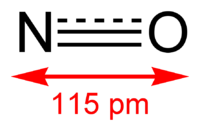
Photo from wikipedia
Nasal nitric oxide (nNO) measurements are used in the assessment of patients suspected of having primary ciliary dyskinesia (PCD), but recommendations for performing such measurements have not focused on children… Click to show full abstract
Nasal nitric oxide (nNO) measurements are used in the assessment of patients suspected of having primary ciliary dyskinesia (PCD), but recommendations for performing such measurements have not focused on children and do not include all current practices. To guide the development of a European Respiratory Society-supported technical standard for nNO measurement in children, an international online survey was conducted to better understand current measurement practices among providers involved in PCD diagnostics. 78 professionals responded, representing 65 centres across 18 countries, mainly in Europe and North America. Nearly all centres measured nNO in children and more than half performed measurements before 5 years of age. The test was often postponed in children with signs of acute airway infection. In Europe, the electrochemical technique was more frequently used than chemiluminescence. A similar proportion of centres performed measurements during exhalation against a resistance (49 out of 65) or during tidal breathing (50 out of 65); 15 centres used only exhalation against a resistance and 15 used only tidal breathing. The cut-off values used to discriminate PCD were consistent across centres using chemiluminescence analysers; these centres reported results as an output (nL·min−1). Cut-off values were highly variable across centres using electrochemical devices, and nNO concentrations were typically reported as ppb. This survey is the first to determine real-world use of nNO measurements globally and revealed remarkable variability in methodology, equipment and interpretation. These findings will help standardise methods and training. There is considerable variability in routine practices for measuring nasal nitric oxide in patients suspected of having primary ciliary dyskinesia. Guidance is needed for professionals using different techniques, equipment and methodology in children. https://bit.ly/3JJndRh
Journal Title: ERJ Open Research
Year Published: 2022
Link to full text (if available)
Share on Social Media: Sign Up to like & get
recommendations!